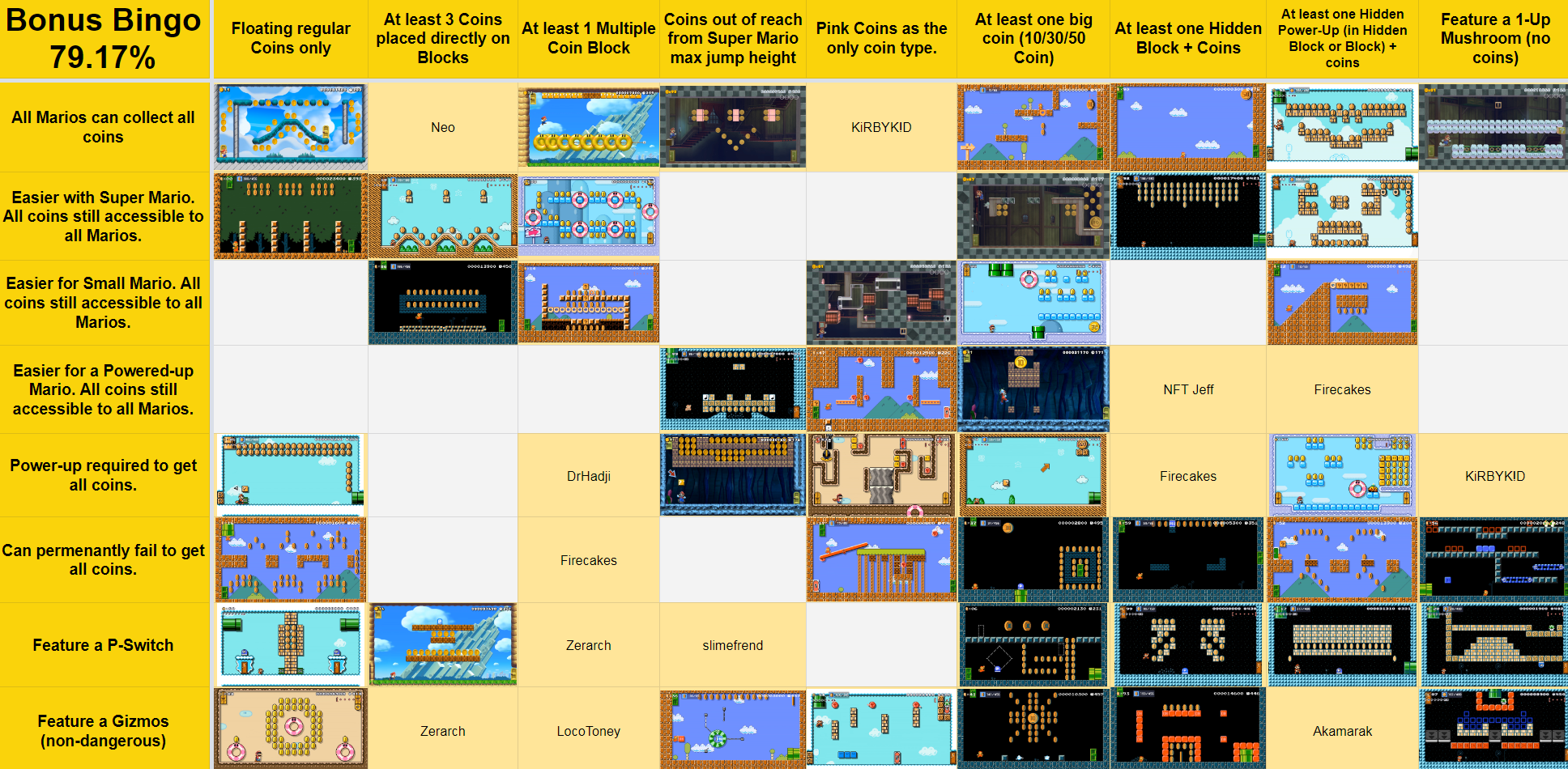

A collection of bonus rooms created during the Mario Maker Workshop Assignment #2. By following this deliberate design process, rooms were varied both visually and gameplay-wise.

Principles that were documented as feedback to a course that I designed, which I then used to revise it and add some needed "quality of life" improvements.

Mario Maker Workshop Assignment #4 featured my course as a clear example of how to follow the design constraints.
Workshop Highlights
- Online collaborative game design group, featuring a communal learning method.
- We used Super Mario Maker 2 as a medium to create and share ideas about level design.
- Members included professional designers and hobbyists.
- Weekly lessons focused on specific topics of design (e.g. enemy design, power-ups, development, layout).
- Every member made contributions to this massive spreadsheet, cataloging hundreds of gameplay ideas and game design principles, as well as facts about Super Mario Maker 2.
- "BINGO" assignments were another example of how we had to collaborate (see chart). We had to design individual gameplay challenges that fulfilled specific combinations of design constraints.
- I learned a new language and schema for dissecting level design (of any genre) and giving specific feedback.
- I started my own blog to write more about what I learned from this workshop, as well as other sources for learning about design.
- I gave feedback and contributed to workshop assignment planning so that course creation could be focused on specific design concepts.
- I created a course rapidly to clearly demonstrate the type of course layout that workshop members needed to use to learn about layered level design with power-ups. This course was short and concise and was included in the instruction graphic for that week's assignment (see Assignment #4 graphic).
See the video below to see highlights of courses I designed, both through workshop assignments and through my own design goals.